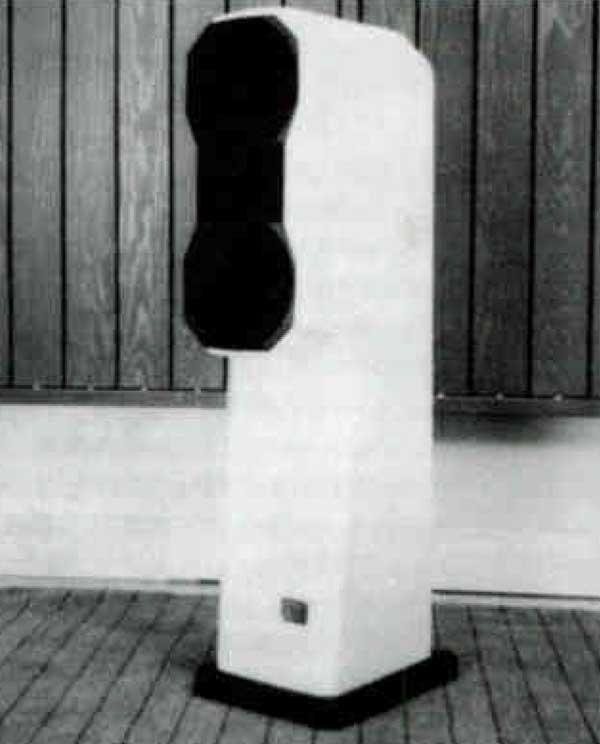| Columns Retired Columns & Blogs |
Hi John, As you may recall I own 3 pairs of Audiosphere speakers. They are cast in two halves and glued together in off-white concrete. They do have a small amounnt of diffraction as the circular front baffle meets the spherical enclosures. But they do manage to disappear as sources when you close eyes.
One pair of the 'sort-of phase-linear' model 2s that use a Coral Flat 5 WR 5" driver with the paper dustcap being a continuation of the pressed paper cone. ? They're a little less edgy than those with a shiny metal dustcap.
And, two pairs of the Model 3s which use a 35MM Foster dome which gets a notch for an impedance peak, and a 3rd oder HP @ a bit abobve 3.3Khz. The mid-bass are Foster/x FW202s which die off naturally to match in. I call the 'sphere 2s poor man's QUAD 57s, and the 3s are poor-man's 63s. But they go deeper, being able to do 32 Hz Pedal reeds in-room and adjusted as per Allison's unequal distances/ratios idea. 1 to floor, X 1.5 to one wall and 2.25 to the other near wall.
I've sold QUAD 57s in an audio shop, and own a pair of 63s. They really do need subs, but integrated and eq'd well (after optimal positioning.) I'll be going with a Duke leJeune Swarm, with two of the subs getting down to 2O Hz or lower.
As a fan of Tony Faulkiners coherent recordings, the spheres are worth having. Especially the 2-ways. Which are not a disappointment against 63s with subs, exceot for big pipe organs.
You may recall that I'm an ex Cathedral Chorister via the RSCMusic (a leader in *the 1sts). Soooo, and I realise I've never asked you!? But can your stand excess vibrato and shrillness from female singers? I just can't!
;-)
Tim Bailey






































